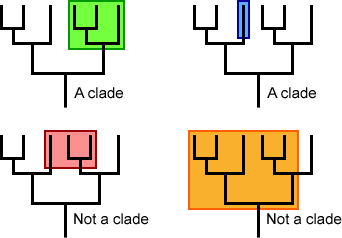What is Taxonomy?
- Taxonomy is a method of organizing different organisms depending on how closely related they are to one another.
- They are classified under various groups, each one more inclusive than the one below it.
- Groups lower down are more specific and contain only a certain type of organism. Large groups are very broad and contain many different organisms.
- The broadest group is a domain, whereas the smallest is a species.
- The most accepted theory states that there are 2 domains, Bacteria and Archaea.
- Eukaryota, the group containing multi-cellular organisms, used to be its own domain, but it is now considered a sub-domain of Archaea.
Origins
- Asgard-arkean and proteobacteria lived in symbiosis.
- In endosymbiosis, the two organisms became inseparable.
- The Asgard-arkean was the host cell and proteobacteria was the mitochondrion.
- Mitochondria still contain small amounts of D.N.A. but cannot live as an independent organism.
Features of Classification
Benefits
- Biological classification organizes organisms based on their shared history.
- Based on evolution and shared ancestors, a family tree can be built between species.
- Classification helps us organize information on species.
- It helps people describe and understand new species.
- Provides international conventions and names for different species.
- All creatures have a scientific name.
- There are lots of rules for naming and organization.
Difficulties
- Classification is traditionally based on shared physical characteristics.
- Morphology is the physical traits of an organism.
- Nowadays we perform genetic analysis on sequences or entire genomes for more accurate information.
- Analyses are done on DNA base sequences and protein amino acid sequences.
- This has revealed new information which has led to a lot of adjustment of the traditional arrangement of clades.
Examples
- The giant panda and the red panda look very similar, have similar diets and live in the same region and were initially thought to be closely related.
- However the giant panda is actually a type of bears (Ursidae) and the red panda is more closely related to raccoons and skunks (Ailuridae).
- Eurasian blue tit was separated from the genus of Parus caeruleus and into the genus Cyanistes caeruleus.
Cladograms
- Cladograms are arranged into trees.
- They branch from a common ancestor, either extinct or extant.
- Cladograms show the relationships between groups of organisms in terms of evolution.
- Branching points, called nodes, show specialization events.
- Specialization events are when differentiating species evolved. Keep in mind though that these points occur over millions of years, despite appearing as a clear branch-off.
Clades
- A clade is a group of organisms that share a common ancestor.
- For example if A and B branch off from the ancestor C, then A and B are a clade.

Naming System
- The current naming system we use was created by the Swedish scientist Carl von Linné, who lived from 1707 to 1778.
- Although we have changed the initial arrangement, we still follow the rules and groundwork Linné laid out.
Binomial Nomenclature
- Animals are written as their genus name and species name.
- Both are written in italics, or underlined if written on paper.
- For example Homo sapiens (humans) and Homo erectus are the same genus, but different species.
- Organisms are usually named after their morphology, area of discovery, properties, or in honor of a person or scientists.
Image Sources
https://evolution.berkeley.edu/teach-resources/clades-1-of-2-definition/